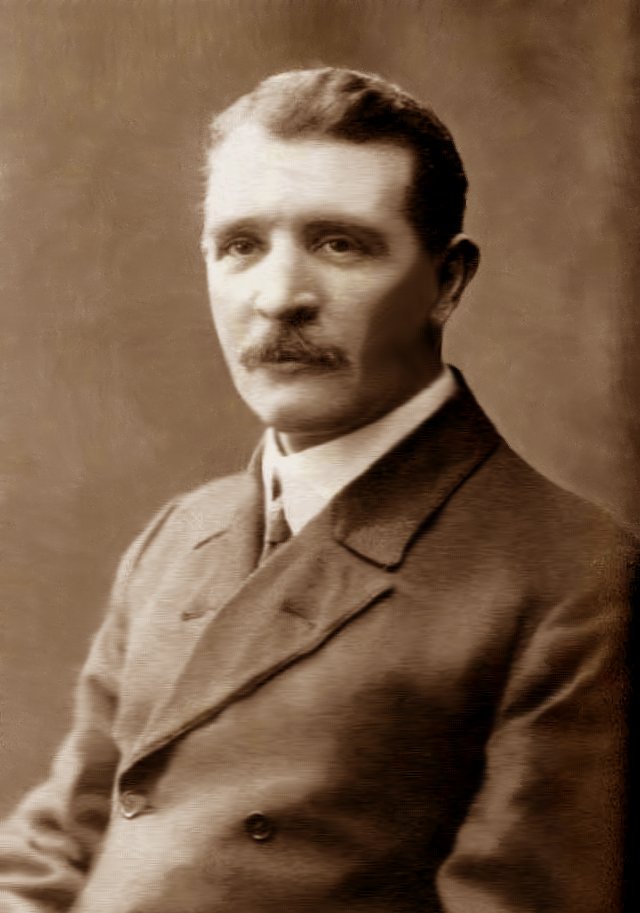Murdoch and the Disaster
The Disaster
At 11.40pm, sixth officer James Moody received the call from the lookouts, and relayed it to Murdoch even before he had replaced the telephone back in its hook. Murdoch’s actions were swift; he shouted out the order, “Hard-a-starboard” to quartermaster Robert Hichens, and at the same time used the telegraph to give the order ‘Stop. Full speed astern.’ Then he moved across the bridge to the panel used to operate the watertight doors in the decks far below.
As the iceberg passed down the side of the ship, Murdoch ordered the helm hard to port in an effort to try and clear the ‘berg with the stern of the vessel. At about the same time, still only seconds after the collision, Captain Edward John Smith entered the bridge, asking, “What have we struck, Mr. Murdoch?”
Murdoch replied, “An iceberg sir. I hard-a-starboarded and reversed the engines and I was going to hard-a-port around it, but she was too close. I could not do any more.”
“Have you closed the watertight doors,” asked Smith?
“They are already closed, sir,” replied Murdoch.
With this, Smith and Murdoch went out onto the starboard wing bridge to see if they could see anything of the iceberg, but it had already been swallowed up by the pitch black of the night.
First officer William Murdoch had begun the process of filling the lifeboats, beginning with the starboard boat No.7. But so few people responded to Murdoch’s plea for people to step into it, that the boat was lowered at 12.45am with only 28 people aboard.
Moving onto the next lifeboat along the starboard side, Murdoch began to fill No.5. Standing close to this boat was a party of six people: Mr. & Mrs. Richard Beckwith, Mr. & Mrs. E. Kimball, Miss. Helen Newsom and Karl Behr. Murdoch invited the six of them to board the lifeboat, but they were all extremely reluctant to swap the seemingly solid decks of the Titanic for the tiny open lifeboat. Eventually, after some urging by Mr. Bruce Ismay, the six of them boarded the boat, and it was lowered at 12.55am, with only 41 people aboard.
The next to be loaded was the starboard emergency cutter, also known as lifeboat No.1. This would be one of the night’s many controversies, for the lifeboat was lowered with a mere 12 people aboard it, in a boat designed to carry a maximum of 35 persons. Occupying the lifeboat was Sir Cosmo and Lady Lucille Duff-Gordon, together with their secretary, Laura Mabel Francatelli, and two American men who were nearby the boat as Murdoch prepared to lower it.
After starboard lifeboat No. 1 was lowered, Murdoch moved onto the next lifeboat along the deck, starboard lifeboat No. 3. The inconsistencies of the loading of the lifeboats that night meant that on the starboard side of the ship, which Murdoch was loading, a man might board a lifeboat if there was a space and no women or children to fill it, yet on the port side where Lightoller was loadinglifeboats, no men were allowed in the boats, even if there were no women to fill them completely.
William Murdoch now returned to the empty davits used to lower boat No.1 from where he, assisted by chief purser Hugh Walter McElroy, began to load collapsible ‘C’. This was about two-thirds full when a large group of men rushed the boat, intent on trying to get aboard. McElroy fired his pistol twice in the air to warn off the unruly mob, and they duly stepped back, allowing Murdoch and McElroy to carry on their work.
Murdoch now moved forward again in a final and concerted effort to free collapsible ‘A’, which was lashed to the roof of Captain Smith’s cabin on the starboard side of the first funnel. Using the oars from this boat to make a ramp down to the deck, the collapsible was lowered down to the deck.
William Murdoch was lost in the disaster, but to ensure that he was never forgotten, a memorial stands in his home town of Dalbeattie, Scotland. It bears the following inscription:
“This tablet is erected to commemorate the heroism displayed by Lieut. William McMaster Murdoch R.N.R. A native of Dalbeattie, when on her maiden voyage, the ‘R.M.S. Titanic’ of which he was First Officer collided with an iceberg and sank, and 825 of her passengers, and 688 of her crew, including Lieutenant Murdoch, perished. 14th and 15th April 1912. A memorial prize is also to be re-competed for annually in Dalbeattie Public School where Lieutenant Murdoch was educated.”

